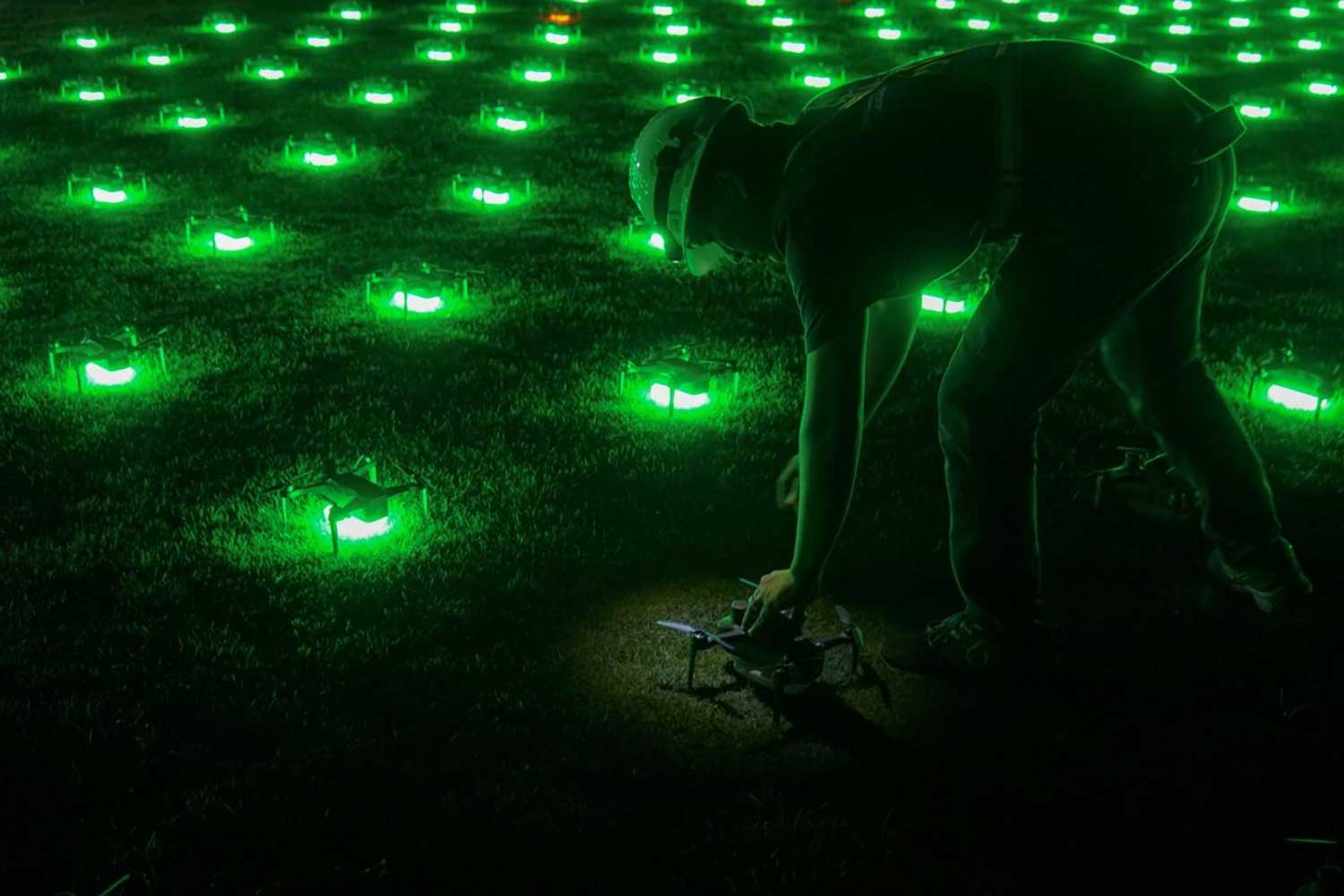
Drones have become a big part of entertainment and technology, but not all drones are the same. If you’ve ever seen a drone light show, you might wonder: how are those drones different from regular ones like DJI? Let’s break it down.
1. Purpose & Functionality
Drone Light Show Drones
Specifically designed for coordinated aerial performances.
Used in synchronized swarms controlled by specialized software.
Focus on LED lighting, precision movement, and fleet coordination rather than photography or videography.
Regular Consumer Drones (e.g., DJI)
- Designed for photography, videography, and recreational flying.
- Focus on high-quality cameras, stabilization, and manual flight control.
- Typically operated individually rather than in coordinated groups.
2. Hardware & Design
Drone Light Show Drones
Lightweight and compact to optimize battery efficiency.
Equipped with bright RGB LEDs for visual effects.
Have simplified structure (no cameras, gimbals, or obstacle avoidance).
Built to be easily replaceable in case of failure.
Regular Consumer Drones
Heavier due to cameras, gimbals, and advanced sensors.
Designed for stability, long-range control, and high-speed maneuvering.
Include features like GPS tracking, collision avoidance, and intelligent flight modes.
3. Flight Control & Software
Drone Light Show Drones
Operated in large swarms (from dozens to thousands).
Use pre-programmed flight paths with precise timing.
Controlled by centralized software (like DroneShow Software, UVify, or CollMot).
Do not require manual piloting; instead, they follow autonomous scripts.
Regular Consumer Drones
Manually controlled via remote controllers or apps.
Have semi-autonomous flight features like ActiveTrack, Waypoints, or Follow Me.
Designed for individual pilots rather than large-scale formations.
4. Battery Life & Performance
Drone Light Show Drones
Shorter flight time (typically 10-15 minutes) since they only need to perform a show.
Optimized for fast charging and quick deployment.
Lighter design helps maximize endurance.
Regular Consumer Drones
Longer flight time (usually 20-40 minutes per charge).
Have interchangeable batteries for extended use.
Designed for stability and endurance rather than synchronized performance.
5. Cost & Availability
Drone Light Show Drones
Specialized equipment, usually sold to businesses and event organizers.
Prices vary, but a single drone can cost $1,000–$3,000, depending on features.
Not commonly available for regular consumers.
Regular Consumer Drones
Readily available from brands like DJI, Autel, and Skydio.
Prices range from $300 to $5,000, depending on camera quality and features.
Can be bought by anyone for personal or professional use.
Summary Table
| Feature | Drone Light Show Drones | Regular Consumer Drones (e.g., DJI) |
| Purpose | Aerial performances & swarms | Photography & videography |
| Design | Lightweight, LED-equipped | Heavier, camera-equipped |
| Control | Pre-programmed, automated | Manually controlled or semi-autonomous |
| Battery Life | Short (10-15 min) | Longer (20-40 min) |
| Availability | Sold to businesses & event companies | Available for consumers |
Final Thoughts
If you want aerial performances with many drones, you need specialized drone light show models. If you're looking for a versatile drone for filming, FPV, or general flying, a DJI or similar drone is the right choice.

